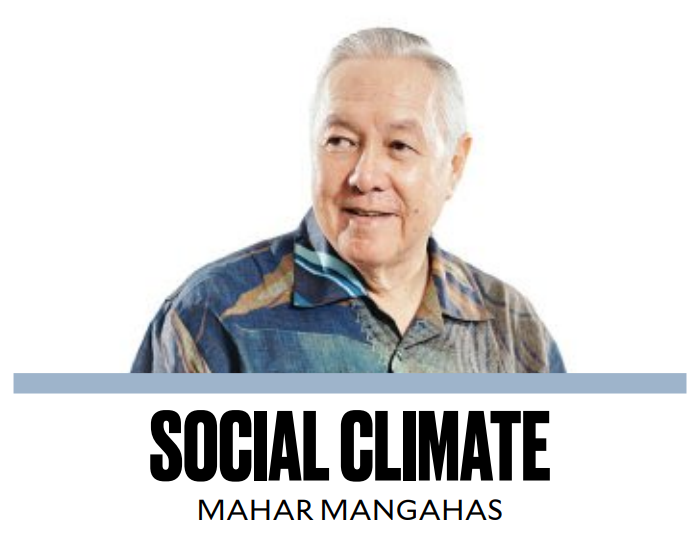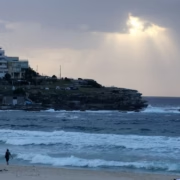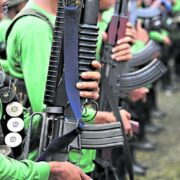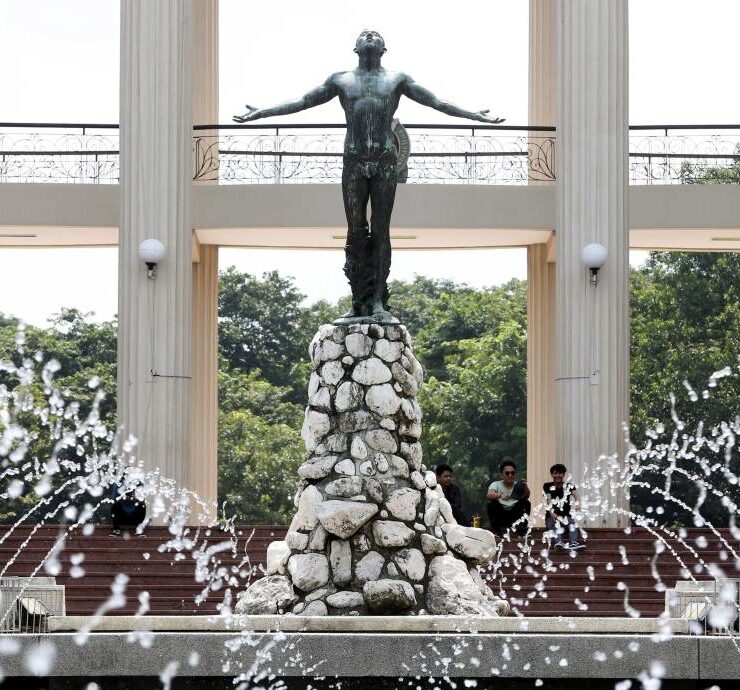10% fearful about 2025

The most remarkable, and most distressing, finding from our Dec. 12-18 survey on the people’s expectations for 2025 is the very large 7-point jump to 10 percent fearful from the record low of 3 percent the year before—see “Social Weather Report: 90% of Filipinos enter New Year with Hope, the lowest since 89% in 2009.” (www.sws.org.ph, 12/27/24)
In the fourth quarter of each year, Social Weather Stations (SWS) asks adult Filipinos: “Ang darating na taon ba ay inyong sasalabungin nang may pag-asa o may pangamba?” (“Is it with hopes or with fears that you enter the coming year?”). (The English version is borrowed from the Allensbach Institute for Demoscopy [ifd-allensbach.de], a pioneer survey research institute in Germany. Despite its lack of a middle option, we have kept it as is, for the sake of tracking from year to year, following Allensbach; comparing Filipinos to Germans is not our prime interest.)
Fearfulness about the future matters more to social well-being than hopefulness about it.
Why should one dwell on the unfavorable end of a scale? Well, it makes sense to prioritize statistics about illness over statistics about wellness. It is rational to emphasize statistics about sadness over statistics about happiness. Focusing on the people’s pains is more important to Filipino society than focusing on their pleasures.
In the unbroken series of 25 SWS annual polls since December 2000, the percentage fearful about the coming New Year has been double-digit only seven times. Those are instances when the hopefuls were not more than 90 percent. The first time was in the initial poll of 2000, which found 13 percent fearful and 87 percent hopeful. There were four other years when the hopeful percent was in the 80s, namely 2001, 2004, 2005, and 2009, with fearful percentages of 12, 18, 12, and 11 respectively.
Last December 2024, is the second time to see 10 percent fearful and 90 percent hopeful; it also happened in 2003, but its jump from the previous year 2002 was smaller, only 5 points. We should heed not only the new value but also its change from before, and try to understand what happened.
The peak percent fearful was 18, in late 2004, with the percent hopeful at its record low of 81; it had jumped by 8 points from 10 in 2003—thus the current jump is the second largest in the survey series. The bottom percent fearful was 3, in late 2023, with hopeful at its peak of 96 (as it was in 2017 and 2019).
To be sure, the hopeful percent has been 91+ for a total of 18 times—that’s how hopeful we Filipinos are, backed up by 25 years of data that are true history, having been documented and permanently archived for retrieval. But let us not be complacent; we should heed the latest statistical signals.
The people’s moods about New Year and Christmas are closely related.
This is as expected since the data come from the same sample of respondents. Among those expecting a sad Christmas, 26 percent—one of every four—were fearful about 2025. Among those expecting a Christmas neither sad nor happy, the percent fearful about 2025 was 13—one of every eight. And, among those expecting a happy Christmas, the fearful percent was only 6 percent—one of every 16. Those NOT expecting a happy Christmas deserve more research. (see “Measuring Christmas cheer,” 12/28/24)
The decline in hopefulness about 2025 was similar in all survey areas.
The 6-point decline in national hopefulness was due to declines, from the year before: (a) by 6 points in NCR, (b) by 5 points in Balance Luzon, (c) by 6 points in Visayas, and (d) by 7 points in Mindanao.
The resulting percentages hopeful about the coming New Year, as of December 2024, were: 91 in NCR, 92 in Balance Luzon, 87 in Visayas, and 89 in Mindanao—just slightly higher in the North than in the South. This suggests taking a balanced geographical approach to development policy.
On the other hand, the decline in New Year hopefulness was inverse to educational attainment.
It fell by: (a) 10 points among elementary dropouts, (b) 8 points among elementary graduates, (c) 5 points among junior high school (JHS) grads, (d) 3 points among senior high school grads, and (e) 2 points among college grads.
The resulting percentages hopeful about the coming New Year were: (a) 83 among elementary dropouts, (b) 89 among elementary graduates, (c) 91 among JHS grads (d), 93 among SHS grads, and (e) 96 among college grads—in line with educational attainment. This suggests the value of loading educational and other human development programs in the reverse or pro-poor direction.
There have been two media releases from the fourth quarter 2024 survey thus far; many more are forthcoming. In this column, I can comment on new releases as they come out, but I cannot scoop them. To request inclusion in the SWS e-alert list, write to SWS senior communications officer Leo Laroza at leo.laroza@sws.org.ph.
—————-
Contact: mahar.mangahas@sws.org.ph.
Dr Mahar Mangahas is a multi-awarded scholar for his pioneering work in public opinion research in the Philippines and in South East Asia. He founded the now familiar entity, “Social Weather Stations” (SWS) which has been doing public opinion research since 1985 and which has become increasingly influential, nay indispensable, in the conduct of Philippine political life and policy. SWS has been serving the country and policymakers as an independent and timely source of pertinent and credible data on Philippine economic, social and political landscape.





















